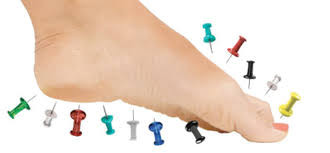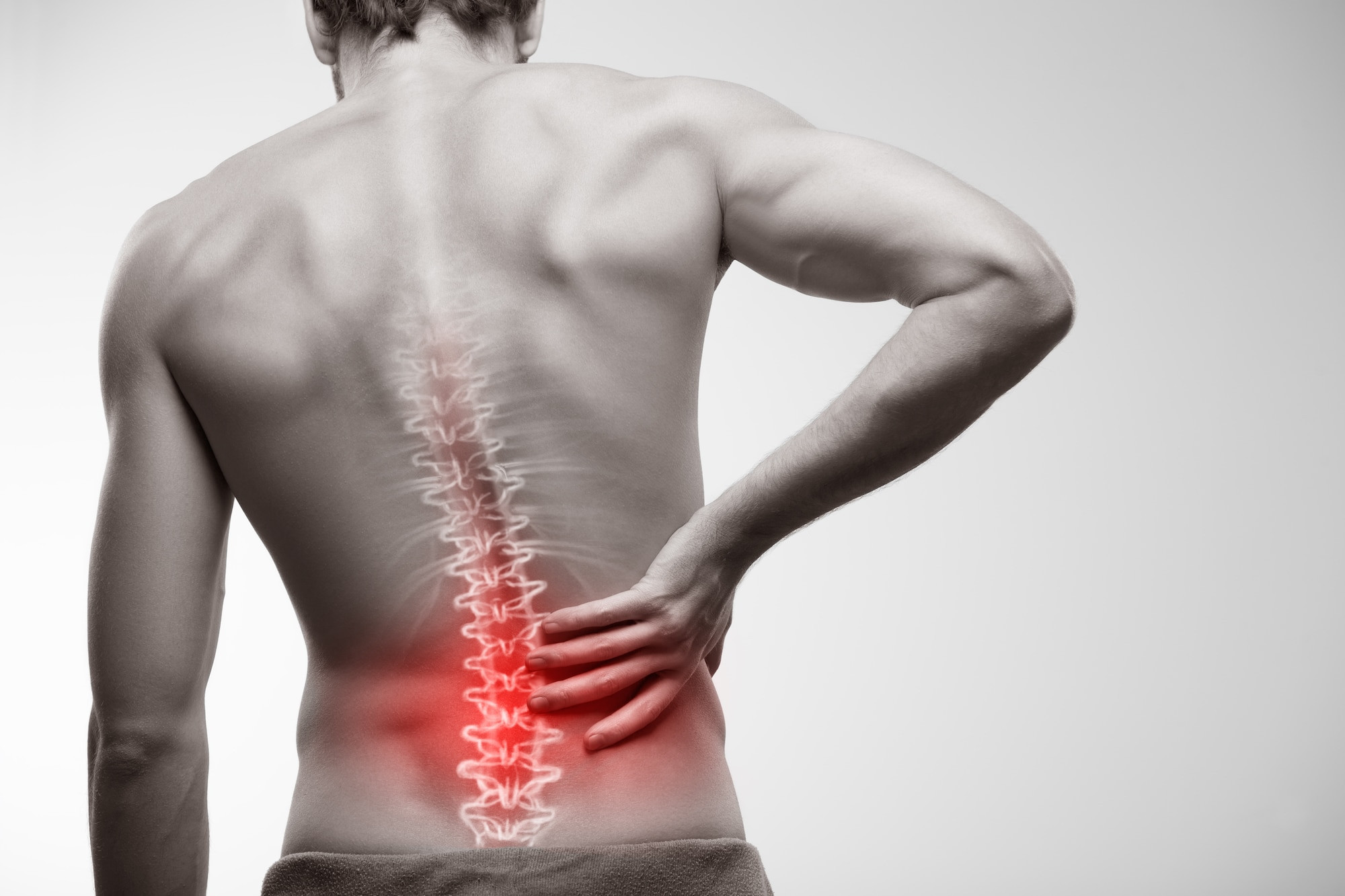Definisi
Nyeri neuropati sentral merujuk pada nyeri yang berasal dari kerusakan, gangguan fungsi atau perubahan pada satu maupun beberapa saraf. Nyeri terjadi bila sistem saraf rusak atau tidak bekerja dengan benar karena penyakit pada otak, batang otak atau saraf tulang belakang. Kerusakan pada saraf dapat menyebabkan kesalahan pengiriman sinyal pada pusat nyeri. Fungsi saraf tersebut juga dapat berubah pada area yang terluka, termasuk pada sistem saraf pusat.
Nyeri neuropati memengaruhi sekitar 7-10 persen masyarakat umum. Keluhan nyeri yang dirasakan bisa timbul dari berbagai kondisi tergantung saraf yang terkena. Pasien umumnya mengeluhkan sensasi nyeri yang tajam, terbakar atau seperti tertusuk jarum. Pada beberapa kasus, kondisi nyeri tersebut berlangsung konstan. Pasien juga bisa merasa nyeri beberapa bulan sampai beberapa tahun setelah terjadinya cedera, yang bisa menyulitkan diagnosis penyakit.
Bila Anda tertarik untuk mengetahui lebih lanjut mengenai neuropati, Anda bisa membacanya di sini: Neuropati - Definisi, Penyebab dan Faktor Risiko.
Penyebab
Sistem saraf terbagi menjadi saraf pusat atau saraf sentral (otak dan sumsum tulang belakang), serta saraf tepi. Seperti namanya, nyeri neuropati sentral terjadi akibat segala jenis cedera dan kerusakan pada sistem saraf pusat, yaitu otak dan saraf di tulang belakang.
Beberapa kondisi yang bisa menyebabkan terjadinya nyeri neuropati sentral adalah:
- Infeksi pada otak (ensefalitis) atau sumsum tulang belakang (myelitis).
- Trauma atau cedera pada otak atau sumsum tulang belakang.
- Tumor dan kanker pada bagian sistem saraf pusat.
- Peningkatan tekanan darah di otak.
- Stroke yang muncul akibat berkurangnya aliran darah ke otak, atau ketika terjadi kebocoran pembuluh darah otak.
- Siringomielia, terbentuknya kantung berisi cairan pada sumsum tulang belakang.
Kerusakan ini juga bisa terjadi setelah stroke, cedera pada otak atau saraf tulang belakang. Nyeri neuropati sentral juga dapat hadir menyertai beberapa kondisi seperti penyakit Parkinson atau sklerosis multipel (penyakit autoimun di mana sel imun tubuh berbalik menyerang selubung saraf yang sehat).
Kami juga memiliki artikel stroke yang bisa Anda baca di sini: Stroke - Definisi, Penyebab dan Faktor Risiko.
Faktor Risiko
Pasien yang merasakan nyeri dalam waktu lama berisiko mengalami sindrom nyeri sentral. Nyeri neuropati kronis lebih sering dirasakan oleh perempuan dibandingkan laki-laki. Di bawah ini adalah beberapa faktor yang bisa meningkatkan risiko terjadinya nyeri neuropati sentral, di antaranya:
- Cedera, seperti benturan atau luka pada bagian otak.
- Infeksi sistem saraf pusat.
- Stres kronis.
- Berat badan berlebih atau obesitas.
- Depresi.
- Penyakit autoimun yang menyerang sel saraf.
- Riwayat penyakit pada anggota keluarga kandung dengan risiko nyeri neuropati sentral.
Gejala
Gejala nyeri dari neuropati secara umum berupa kebas, kesemutan, sensasi seperti remasan, tersengat listrik atau rasa terbakar. Pasien bisa menjadi sangat sensitif terhadap sentuhan ringan atau perubahan suhu, karena faktor tersebut bisa menimbulkan nyeri. Keluhan nyeri dapat berlangsung terus-menerus dan muncul tiba-tiba. Selain itu, kulit juga bisa terlihat memerah.
Nyeri neuropati sentral biasanya memiliki derajat nyeri sedang hingga berat, dan bisa membatasi aktivitas. Karena nyeri yang dirasakan, pasien bisa mengalami perubahan suasana hati dan penurunan kualitas tidur.
Diagnosis
Dokter akan melakukan pemeriksaan awal dengan bertanya mengenai keluhan yang membuat Anda datang untuk berkonsultasi dengan dokter. Ceritakan keluhan Anda secara rinci dan bagaimana keluhan tersebut memengaruhi kualitas hidup Anda. Dokter juga bisa menanyakan riwayat penyakit Anda sebelumnya, riwayat penyakit pada keluarga, riwayat pengobatan dan aktivitas Anda sehari-hari.
Selanjutnya dokter akan melakukan pemeriksaan fisik dan pemeriksaan saraf untuk melihat bila terdapat kelainan pada fungsi saraf. Refleks dan kekuatan otot, kemampuan indra peraba serta postur dan koordinasi tubuh akan dinilai.
Karena nyeri neuropati sentral terjadi akibat gangguan pada otak atau saraf tulang belakang, pemeriksaan penunjang akan dilakukan untuk memastikan diagnosis. Beberapa pemeriksaan tambahan yang bisa dilakukan adalah:
- Pemeriksaan darah, bertujuan untuk memeriksa adanya gangguan dalam tubuh, seperti kemungkinan infeksi, anemia, adanya peradangan atau kelainan fungsi imun lainnya.
- Pemeriksaan radiologis seperti CT scan atau MRI untuk memeriksa kondisi sistem saraf pusat bila terdapat kerusakan.
- Elektromiografi (EMG) untuk menilai fungsi saraf dan otot.
- Pemeriksaan kecepatan konduksi saraf untuk mengukur kecepatan aliran sinyal pada saraf.
- Pengambilan cairan serebrospinal untuk diperiksa di bawah mikroskop.
Tata Laksana
Karena nyeri neuropati diduga berasal dari kelainan sistem saraf pusat, pengobatan akan berfokus untuk mengatasi penyakit penyebab yang mendasari nyeri, serta untuk meredakan nyeri. Diharapkan pengobatan bisa mempertahankan fungsi saraf dan meningkatkan kualitas hidup pasien. Dokter bisa menyarankan kombinasi terapi seperti pengobatan, terapi fisik, konseling, dan prosedur operasi bila diperlukan.
Ada banyak rekomendasi kelompok obat berbeda yang diajukan untuk mengatasi nyeri neuropati. Obat kelompok antidepresan, atau obat yang bekerja pada beberapa reseptor saraf pusat bisa diberikan. Umumnya antinyeri biasa tidak terlalu efektif dalam mengatasi nyeri neuropati sentral, sehingga antinyeri yang diberikan umumnya lebih kuat. Beberapa obat masih dalam tahan pengembangan dan penelitian.
Prosedur bedah untuk memberikan obat langsung ke area tubuh tertentu, atau mengubah struktuf saraf spesifik, bisa menjadi alternatif pengobatan untuk nyeri neuropati berulang. Namun tentunya prosedur ini bisa memiliki risiko terjadinya komplikasi yang bisa terjadi.
Komplikasi
Nyeri neuropati bisa berlangsung lama dan bisa menimbulkan stres psikologis bagi pasiennya. Selain itu, seperti yang sudah disebutkan pada bagian tata laksana, prosedur bedah yang dilakukan juga memiliki risiko menimbulkan komplikasi seperti infeksi atau munculnya sensasi kebas di bagian tubuh lain.
Pencegahan
Pencegahan dari nyeri neuropati sentral berupa menjaga gaya hidup serta mengetahui informasi terkait nyeri neuropati. Jaga berat badan ideal karena obesitas menjadi salah satu faktor risiko terjadinya nyeri neuropati. Bila Anda mengalami gangguan saraf pusat, Anda harus rutin kontrol dengan dokter penanggung jawab Anda, untuk mencegah terjadinya komplikasi lebih berat.
Bila Anda memiliki pekerjaan yang berisiko terjadinya kecelakaan kerja, jangan lupa untuk selalu memakai alat pelindung diri pada area kerja untuk mencegah terjadinya cedera. Olahraga secara teratur setidaknya 5 kali seminggu selama 30 menit untuk memperkuat otot-otot tubuh.
Kapan Harus ke Dokter?
Anda dapat melakukan pemeriksaan ke dokter jika mengalami nyeri yang berlangsung terus-menerus dan muncul secara tiba-tiba, atau muncul hanya karena sentuhan ringan atau pada suhu dingin.
Mau tahu informasi seputar penyakit lainnya? Cek di sini, ya!
- dr Hanifa Rahma
Overview of Central Pain Syndrome. (2022). Retrieved 17 October 2022, from https://www.verywellhealth.com/what-is-central-pain-syndrome-2564611.
Central Pain Syndrome. (2022). Retrieved 19 October 2022, from https://www.ncbi.nlm.nih.gov/books/NBK553027/.
Neuropathic Pain. (2017). Retrieved 19 October 2022, from https://www.ncbi.nlm.nih.gov/pmc/articles/PMC5371025/.
Neuropathic Pain. (2020). Retrieved 19 October 2022, from https://my.clevelandclinic.org/health/diseases/15833-neuropathic-pain#management-and-treatment.
Central Neuropathic Pain Syndromes. (2016). Retrieved 19 October 2022, from https://www.mayoclinicproceedings.org/article/S0025-6196(16)00073-2/fulltext.
Therapeutic Approaches for Peripheral anda Central Neuropathic Pain. (2019). Retrieved 19 October 2022, from https://www.ncbi.nlm.nih.gov/pmc/articles/PMC6906810/.












